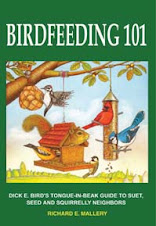
Squirrelly Forests
Gray squirrels’ faulty memories turn out to be good for forests, but the nut-hoarding habits of their red cousins are not, according to scientists.
The bane of suburban gardeners and backyard bird feeders, the ubiquitous gray squirrel buries walnuts, acorns and other nuts across the landscape in a pattern called "scatter hoarding," a Purdue University researcher said.
Some nuts are forgotten and have a chance to germinate and sprout into black walnut, oak and hickory trees needed to regenerate steadily retreating hardwood forests.
The red squirrel, which invaded the U.S. Midwest from higher latitudes within the past century, usually piles nuts in a few above-ground caches, where the seeds dry out or are eaten.
Seven times as many walnuts gathered by gray squirrels germinate compared with walnuts hoarded by red squirrels, ecologist Rob Swihart said in a statement released by Indiana University.
Fur-Ball Facts
• Squirrel fish have large and deep brown eyes just like our little tree squirrels. And that is why they are called squirrel fish. So if you think your squirrel is acting a little fishy—there’s a reason.
• The gray squirrel’s success has a lot to do with his ability to vary his diet from location to location and season to season. One was once observed rolling goose eggs almost as big around as himself away from an unguarded nest.
• Gray squirrels have acute vision, acute hearing and a cute little furball face.
The flying squirrel uses his tail as a rudder when he glides from branch to branch, sometimes a distance of 200 feet or more. Gliding on a thin membrane on each side of his body, connecting his front and back legs, is what makes this all possible.
"A more gentle, docile, and graceful animal than the flying squirrel does not exist; and though without anything striking in the way of color or markings, it is nevertheless one of the most beautiful of our mammals."
—C. Hart Merraim








